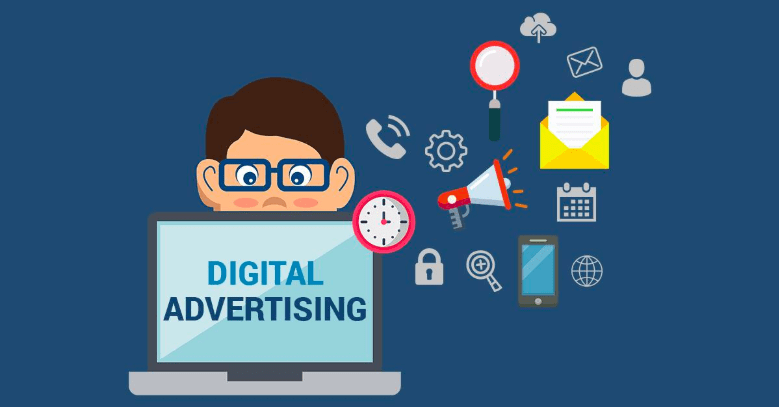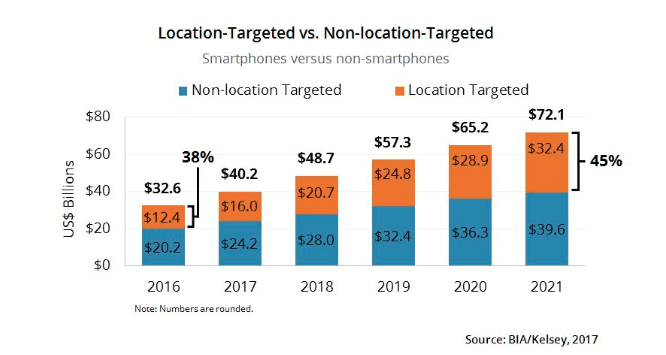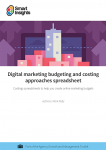Digital advertising trends have shifted from desktop to mobile in recent years. This mobile-first approach is quickly taking over as the preferred method for digital advertising and is on the cusp of being the most focused on medium for ad campaigns.
But mobile-first is not the only digital advertising trend that has pushed to the forefront of the marketing sector. We’ve researched what the future holds for digital advertising, and have come back with some deep and interesting insights into five advertising trends that will have a strong impact through the rest of 2018:
- Mobile-first advertising
- Personalization in digital marketing
- The effectiveness of video advertising
- Impact of location-based targeting
- The effect of micro-moments on consumers
Mobile-first advertising
Mobile-first was intended to notify consumers that a company cares for its websites and digital forms of communication while remaining focused on the end user’s mobile experience, as well as how employees and customers interact with their brand from multiple devices.
Crafting your marketing strategies towards mobile devices and smartphones is an absolute must. In 2018, over two-thirds of people will be using mobile devices for their everyday online usage.
Millennials are by far the fastest growing consumer demographic of 2018. Noted as the age group between 18 and 34, this demographic is set to overtake Baby Boomers (ages 51 to 69) as the most populous demographic, -at least in the United States.
One of the key attributes of millennials that should be mentioned is that they have all been digitally wired since they were children, and are predisposed to look to their smartphones for answers to their questions.
It was found by a Pew Research poll in 2015 that 15 percent of people in the 18 to 34 age group relied completely on smartphones for all their online activities.
As stated, this demographic is quickly representing the largest customer and consumer demographic of digital marketing material. Thus, it’s time all digital marketers pivot their customer journey through the adoption of the mobile-first approach.
This goes beyond just changing your website layout to be more responsive, and hits many facets of the marketing process.
The Importance of Personalization in Digital Marketing
Personalization is one of the most effective approaches to digital marketing, and the advent of technological innovations makes enhanced data collection and personalization more important than ever.
97 percent of marketers agree that personalization is one of the keys to success in the digital marketing landscape.
Personalization is easily the largest digital trend brands are focusing on in 2018. It is the practice of working to provide an experience for the customer that is aligned with the customer’s specific needs and consumer preferences.
It should be noted that a vastly increasing number of businesses are pushing investment of larger sections of their marketing budgets into this personalization process. They are working to build online experiences that provide engaging content, while remaining customized for each experience on an individual scale.
Additionally, these businesses are working quickly to adopt messaging based on environmental triggers, as well as calls to action that cause stronger overall engagement. The innate ability to personalize what your audience sees is largely dependent on the extent to which you know your customer (the KYC approach).
The effectiveness of video advertising

Some digital marketers get too caught up attempting to rationalize not using video advertising.
The truth of the matter is, over half of consumers state that they would like to see more video content from marketers of all sectors. This is a golden opportunity that should be taken advantage of, especially now in 2018.
Customers, in general, are spending more time watching video.
Additionally, video advertising is a high converter of leads to sales. Some of the largest e-Ecommerce marketplaces, eBay and Amazon, have reported that adding video ads to product descriptions typically increase buying chances by over 35 percent.
Also, people share videos far more often than text. This can get your message to a broader audience far faster than a 1,500-word blog post. A video is a perfect format for educating and informing as well, as it incorporates both audio and visual to appeal to multiple senses simultaneously.
Additionally, search engines love multimedia content, especially video. These search engines place a high priority on video content when changing up algorithms to alter the way searches are displayed and pages are ranked.
Video advertising in digital marketing can also convey a large amount of information effectively in a shorter period of time.
A 2,000-word article might take ten minutes for someone to read. 2,000 spoken words can be done in half the time, with a higher engagement and retention rate. The video also tells the story much better than other advertising formats.
Analytics and reporting are also far more telling for determining if your content is reaching the right audience, and how they are responding.
Location-based advertising in the world of now
In 2018, marketers believe that location-based advertising is one of the most up-and-coming mobile opportunities available.
Per research firm BIA/Kelsey, American digital marketers spent more than $16 billion on targeted mobile ads last year, and are projected to reach over $20 billion in 2018.

As implied by its name, location-based advertising denotes the creation of customized, personalized, and targeted marketing efforts that have been tailored to consumers of a specific place.
While not truly a new concept (after all, direct mail campaigns have been around on a neighborhood and mailing route basis for quite a while), geo-targeted and GPS enabled mobile devices have caused it to be easier than ever before for digital marketers to focus on where their customers are, and find the perfect time to reach out for maximum effectiveness in their campaigns.
Modern digital marketing tactics that are location-based are things such as app push notifications and text messaging. They can be triggered by specific actions (like making a purchase or walking into a store) and can help immensely in retaining and engaging customers. However, it isn’t enough to simply start texting all smart devices that interact with your business or brand.
It’s important to perform due diligence and research to implement carefully crafted strategies that get the most out of local advertising campaigns. After all, we aren’t looking to lose money, right?
Capturing and Guiding Micro-Moments
With customers putting a focus into prompt replies to their every question, high growth opportunities are everywhere for brands that offer consumers instantaneous information upon immediate request.
In the wild, wonderful world of digital marketing, deciding the best place to begin is difficult and overwhelming. One solid place to start is with micro-moments, defined as any instance that a consumer interacts with a business on a device.
Understanding the vital importance of these moments is key, however, having the ability to measure them is just as important.
In hundreds and hundreds of micro-moments that occur in the average consumer’s day, people use their mobile phones to discover answers to questions and solve problems while on the go. What this means is that there are far more opportunities in 2018 than ever before for your business and brand to appear.
There are many ways micro-moments can assist in your mobile strategy. 82 percent of users consult their phones while shopping at a brick and mortar store.
66 percent consult their phones to discover more about something seen in a television commercial.
Micro-moments can be broken down into four main groups:
- I want to know
- I want to go
- I want to do
- I want to buy
Having a digital marketing strategy that responds to all four categories of broad micro-moments puts your campaign well on its way for multiplying visibility in 2018.
Tying it all together
Throughout 2018, digital advertising is going to shake up the way marketing is done. Using the above trends, you as a marketing professional can make a greater impact to your consumers.
What’s more, the above is only scratching the surface of some of the technologies at the forefront of the digital marketing game.
Things such as omni-channel marketing, Google AMP and LMP, outstream video, chatbots, and advanced marketing automation based on machine learning will likely be some of the most capitalized trends in 2019.
However, by leveraging your impact through mobile-first practices, you can more efficiently reach your consumer by being responsive on their device of choice. Through more advanced personalization tactics, you can push information to your consumer on a wavelength that they find more warming than a simple “Hello Consumer” approach.
By utilizing video advertising, your campaigns will reach a broader audience and your message will be absorbed more effectively than text-based alternatives.
What’s more, taking advantage of location-based strategies through consumers’ mobile devices allows you to personalize and target your messages to appear at the most convenient time for the potential customer. And capitalizing on micro-moments ties it all together by ensuring that your brand is at the front of your consumer’s mind at every possible step of the process.

 Manvi Agarwal is a Marketing and Communication Strategist at
Manvi Agarwal is a Marketing and Communication Strategist at